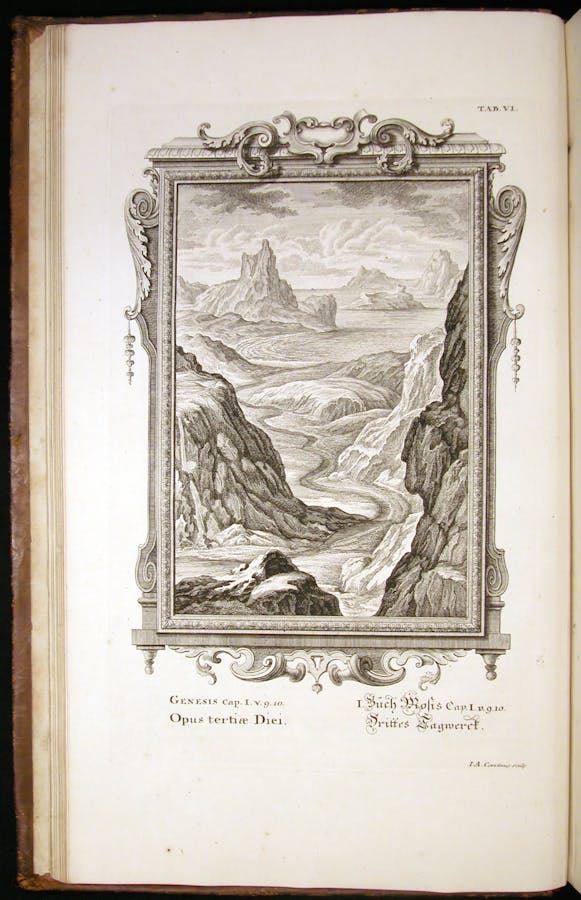
Scheuschzer was a Swiss naturalist whose work was influenced by his reading of the biblical account of creation. This engraving was published in Geestelyke natuurrkunde in 1728. This image illustrates the creation of the water cycle.
Image courtesy of the History of Science Collections, University of Oklahoma Libraries
We live on a water planet. Water, both liquid and frozen, covers 75% of Earth’s surface. It forms clouds in the sky above. It permeates the ground below. Its presence and protection are vital for life. Its absence brings almost certain death.
One of the best examples of nature’s orderliness is the water cycle. Minute by minute, day by day, water evaporates from Earth’s surface, rises into the atmosphere, condenses into rain or snow, and falls back down.
It seems obvious today, but it took centuries to come to a detailed understanding of this process. For some, the water cycle represented evidence of God’s wisdom and creation’s orderliness.
“The LORD . . . who calls for the waters of the sea and pours them out upon the surface of the earth—the LORD is his name.”
Amos 9:5–6









